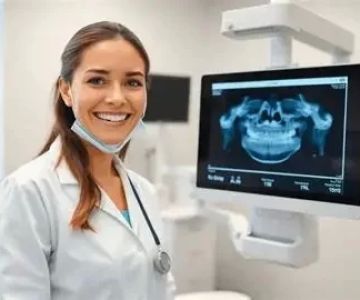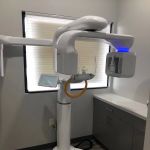- 1-understanding-oral-hpv
- 2-common-signs-and-symptoms-of-oral-hpv
- 3-when-to-see-a-dentist-or-doctor
- 4-oral-hpv-prevention-methods
- 5-role-of-vaccination-in-oral-hpv-prevention
- 6-lifestyle-changes-to-reduce-oral-hpv-risk
- 7-real-life-oral-hpv-awareness-story
- 8-expert-advice-and-resources
1. Understanding Oral HPV and Its Impact on Health
Oral Human Papillomavirus (HPV) is a viral infection that affects the mouth and throat. It’s one of the most common sexually transmitted infections in the United States and can sometimes lead to serious health issues, including oropharyngeal cancers. Understanding the nature of oral HPV helps in recognizing the signs of oral HPV symptoms and prevention methods that are crucial for maintaining oral health.
Unlike many infections, oral HPV often shows no symptoms in early stages, making awareness and preventive care essential. The virus is transmitted mainly through oral sex but can also spread via other intimate contact. Early detection can reduce risks and improve outcomes significantly.
2. Common Signs and Symptoms of Oral HPV Infection
Recognizing oral HPV symptoms can be challenging due to their subtlety or absence in early phases. However, some common signs may include persistent sore throat, difficulty swallowing, unexplained ear pain, lumps or growths in the mouth or neck, and white or red patches inside the mouth.
In some cases, small benign warts may appear on the tongue, gums, or roof of the mouth. These signs should never be ignored, especially if they persist longer than two weeks. Routine dental checkups often help in early identification of abnormalities linked to HPV infections.
3. When to See a Dentist or Doctor for Oral HPV Concerns
If you notice any persistent oral symptoms like lumps, sores, or patches that do not heal, it’s essential to consult a healthcare professional promptly. Dentists and doctors can perform thorough examinations and recommend tests to detect HPV infections or related complications.
Early consultation is vital because oral HPV, if left untreated, may increase the risk of developing oral cancers. Medical professionals can also provide guidance on monitoring and managing symptoms effectively.
4. Effective Oral HPV Prevention Methods to Protect Your Health
Preventing oral HPV starts with informed lifestyle choices and safe practices. Key prevention methods include practicing safe oral sex, limiting the number of sexual partners, and avoiding tobacco and excessive alcohol use which can increase vulnerability.
Maintaining excellent oral hygiene, regular dental visits, and open communication with healthcare providers further support prevention efforts. Understanding these steps helps reduce the spread and impact of oral HPV in communities.
5. The Role of Vaccination in Preventing Oral HPV
One of the most effective prevention strategies is the HPV vaccine, which protects against the most common high-risk HPV strains linked to cancers. Although initially targeted for cervical cancer prevention, vaccination is increasingly recognized for reducing oral HPV infections as well.
The Centers for Disease Control and Prevention (CDC) recommends vaccination for preteens and young adults, but it can benefit a wider age range. Staying updated with vaccines is a proactive way to guard against oral HPV and related diseases.
6. Lifestyle Changes That Can Help Lower Your Risk of Oral HPV
Beyond vaccination and safe practices, lifestyle changes can play a significant role in lowering oral HPV risk. Quitting smoking and reducing alcohol consumption enhance immune response and oral health. Eating a balanced diet rich in antioxidants supports tissue repair and resistance to infections.
Stress management and regular exercise also contribute to overall immunity, helping the body fight off viral infections more effectively. Integrating these habits creates a holistic defense against oral HPV.
7. Real-Life Story: Raising Awareness About Oral HPV Symptoms and Prevention
Emily, a 32-year-old teacher, shares her journey after discovering persistent mouth sores during a routine dental checkup. Her dentist recommended testing which revealed an oral HPV infection. Thanks to early detection and lifestyle adjustments, Emily was able to manage the infection and avoid complications.
Her story highlights the importance of awareness and regular dental care in spotting the signs of oral HPV symptoms and prevention methods that can save lives.
8. Expert Advice and Resources for Managing Oral HPV
For personalized guidance on oral HPV detection and prevention, consulting trusted professionals is essential. Sites like Dentistry Toothtruth offer expert advice, reliable products, and resources tailored to maintaining oral health and preventing HPV-related complications.
Being informed empowers you to take control of your oral health and act proactively against oral HPV risks with confidence.







 Cary Lee Family Dentistry - Dr. Jae S. Lee DDS, PA4.0 (113 review)
Cary Lee Family Dentistry - Dr. Jae S. Lee DDS, PA4.0 (113 review) James B Ford DDS4.0 (87 review)
James B Ford DDS4.0 (87 review) NLV Dental Group4.0 (72 review)
NLV Dental Group4.0 (72 review) Freeport Kids Dental & Orthodontics4.0 (235 review)
Freeport Kids Dental & Orthodontics4.0 (235 review) Loretto Multi-Specialty Dental Center4.0 (111 review)
Loretto Multi-Specialty Dental Center4.0 (111 review) Sony Thomas, DDS Arcadia Endodontics4.0 (8 review)
Sony Thomas, DDS Arcadia Endodontics4.0 (8 review) The Importance of Oral Health Education During Pregnancy for a Healthy Pregnancy
The Importance of Oral Health Education During Pregnancy for a Healthy Pregnancy Best Tips for Brushing Your Teeth Properly for Healthy Gums: Essential Techniques for Oral Health
Best Tips for Brushing Your Teeth Properly for Healthy Gums: Essential Techniques for Oral Health Why Skipping Dental Checkups Can Lead to Bigger Oral Health Problems
Why Skipping Dental Checkups Can Lead to Bigger Oral Health Problems Advantages of Porcelain Dental Restorations
Advantages of Porcelain Dental Restorations How Can Diabetes Cause Tooth and Gum Problems? Preventing and Managing Oral Health Issues
How Can Diabetes Cause Tooth and Gum Problems? Preventing and Managing Oral Health Issues Healthy Habits for Promoting Good Oral Health and Hygiene: Tips for a Healthy Smile
Healthy Habits for Promoting Good Oral Health and Hygiene: Tips for a Healthy Smile